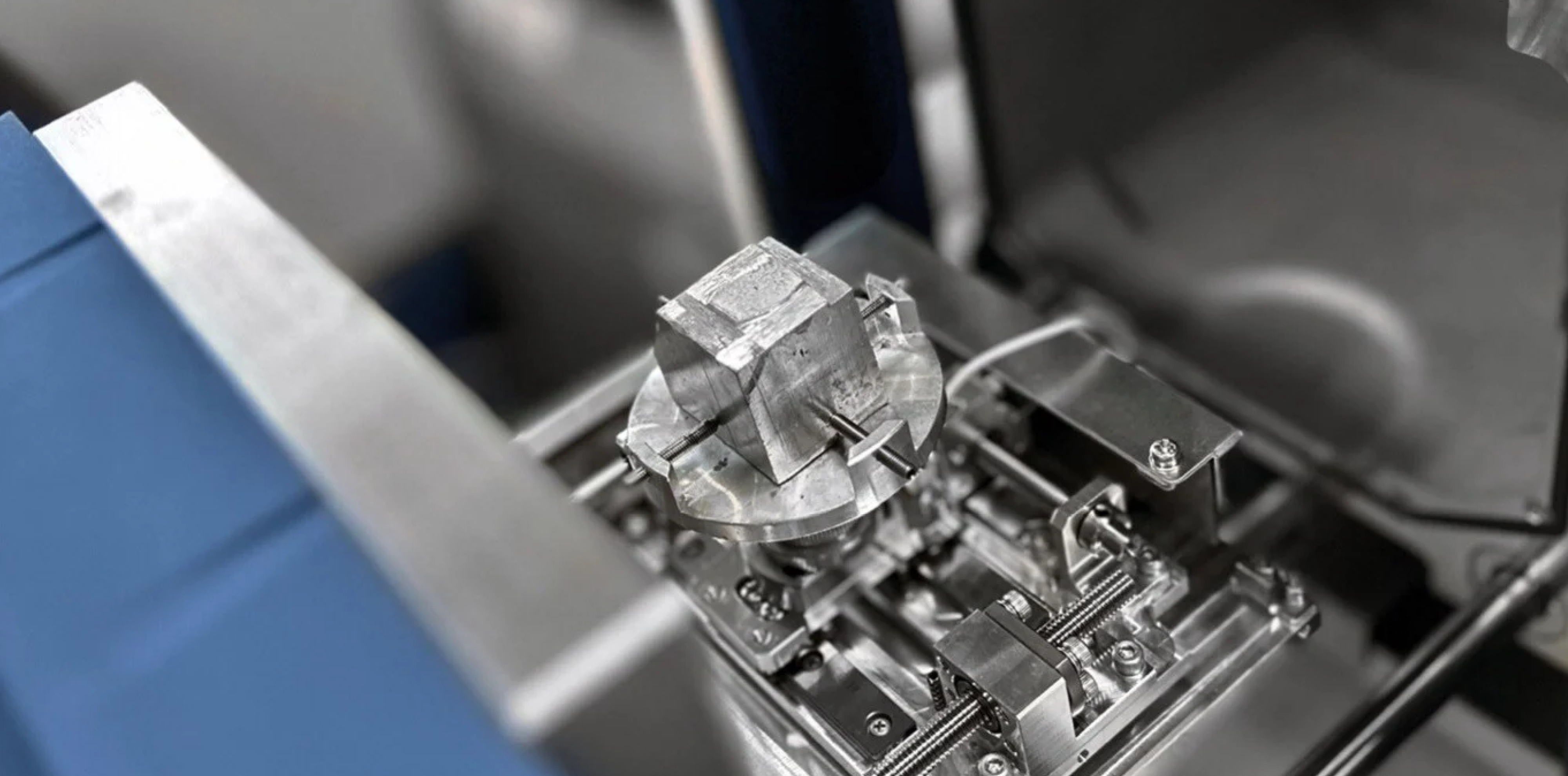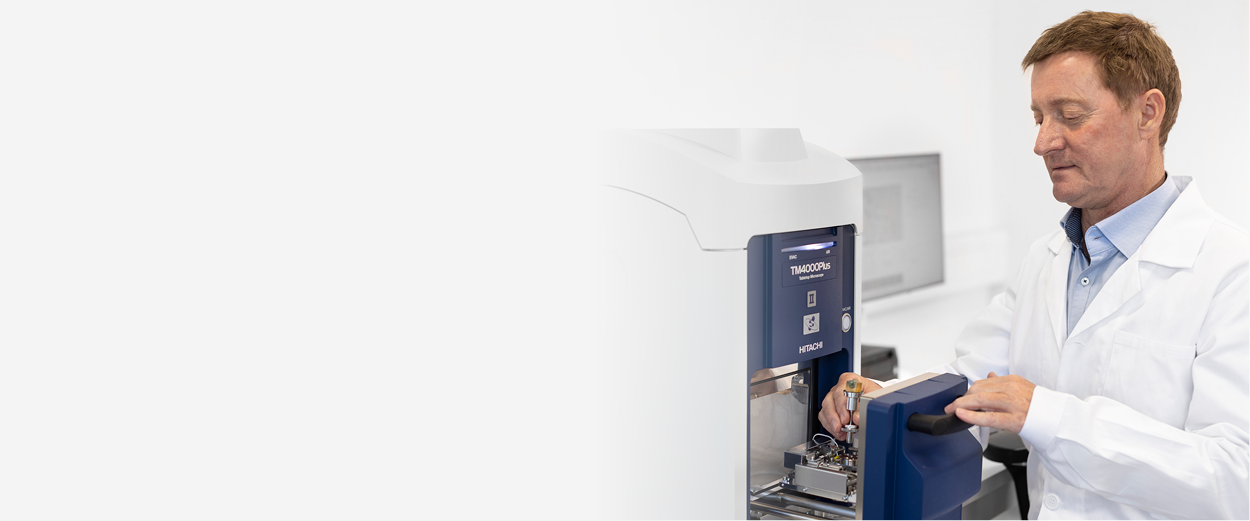On-demand webinar
How to do accurate, fast sample analysis with a tabletop electron microscope equipped with EDS
Watch nowHitachi High-Tech Europe

3 min read
Sep 13, 2024 9:09:51 AM
Typical conventional Scanning Electron Microscopes (SEMs), whilst being bulky, expensive and sometimes complex to operate for anyone who is not a well-trained specialist, can often deliver much higher image resolution than a typical analytical task requires.
In recent years, compact Tabletop SEMs have emerged as robust, versatile, and capable tools which provide sufficient image resolution for many applications but with unsurpassed ease-of-use and at a fraction of the cost of a conventional full-size SEM.
This article will explore the benefits of Tabletop SEMs and will give an overview of some of the features of the TM4000 Series, Hitachi’s latest generation of compact, versatile, and easy-to-use Tabletop SEMs.

Copper sulphide crystals. 5kV, SE signal
Tabletop SEMs can be seen as a logical extension of optical stereo microscopy by overcoming this well-established technology’s image resolution and depth-of-focus limitations. In addition, these instruments provide additional image information such as differences in material composition, and, when equipped with X-ray element analysis functionality, clear insight into the elemental (chemical) composition of a sample.
For specimen imaging in optical stereo microscopes no special preparations are required – the sample is placed underneath the lens, the source of illumination is switched on, focus is adjusted, and the image is saved.
A well designed Tabletop SEM should follow this working style: Any sample can be loaded, the electron beam is started using optimized pre-defined observation- purpose defined settings, and sophisticated algorithms instantly optimize image contrast and focus: The user only has to move the site-of-interest to the image center and set the desired magnification. In short: SEM for everyone!

Corroded copper wire. 10kV, SE signal
Hitachi introduced the first commercial Tabletop SEM in 2005, allowing any operator to easily and quickly produce high quality electron microscopy images, with the technology rapidly being adopted by industry and academia for a wide range of fields such as life science research, materials science, and quality control.
The TM4000 Series is the latest generation of Hitachi’s Tabletop SEMs, offering advanced capabilities whilst keeping the core of the concept – ease-of-use and speed of time-to-data – at the heart of the technology without sacrificing flexibility.
Hitachi’s new generation of Tabletop SEMs allows users to understand their samples and solve their issues quickly and easily without having to invest in expensive conventional full-size SEMs.

Cosmetic powder, EDX analysis. 15kV
The TM4000 Series offers a number of advanced features, giving it convincing image quality whilst remaining a user-friendly, multi-purpose entry-level SEM. In just a few simple steps, a high resolution image can be obtained.
No sample preparation is needed - even for non-conductive samples - allowing for observation under low vacuum status. The Variable Pressure mode reduces image charging artefacts caused by incident electrons, and with charge-up reduction mode, the user can reduce the charge on a sample with just one click.
Both Secondary Electron (SE) and Backscatter Electron (BSE) signals can be obtained and simultaneously recorded in low-vacuum mode. A range of Probe Currents (Ip) and Acceleration Voltages (kV) can be chosen to produce the optimum imaging results by the operator.
With the TM4000Plus, the Secondary Electron (SE) signal provides topographic information while the Backscatter Electron (BSE) signal provides material compositional (elemental contrast) information. The ability to Mix both SE and BSE signals provides the user with the best of both worlds of topographic and materials contrast in one image.
The TM4000Plus can be configured with a wide range of accessories, not least Energy Dispersive Spectroscopy (EDS Analysis) from world leading analytical companies such as Oxford Instruments or Bruker Nano, allowing fast and accurate Elemental Analysis.
An optical image of the sample is automatically captured on loading and this OM image can be used to navigate the sample. When EM images are recorded, a thumbnail image is saved and overlaid on the Optical Navigation image (SEM MAP function), allowing navigation history of the sample. Samples up to 80mm in diameter and 50mm in thickness can be loaded, improving upon previous-generation Tabletop SEMs.
Optional software functions allow greater understanding of surfaces and samples. These include:
For special needs, a comprehensive set of commands allows automation using Python scripts.
At its heart, the TM4000 Series is all about ease-of-use, versatility, and giving even the most budget-conscious company or academic institution convincing imaging and analysis capabilities required to fully characterize a specimen without having to fall back to expensive full-scale SEMs.

The sample stage is pulled completely out of the chamber for easy sample changes
Tabletop SEMs such as the TM4000 Series are expanding the capability and use of Scanning Electron Microscopy in industrial and academic fields, offering companies and institutions a user-friendly, versatile tool which can, in many cases, reveal unparalleled, in-depth insights into samples at a fraction of the cost of conventional full-size SEMs.
And if more imaging power should be desired, the ultra-compact Hitachi FlexSEM1000 will be a suitable choice for any company or institution.
As Patrick Marks from Hitachi High-Tech Europe says: “The TM4000Plus is the widest ranging, most versatile, flexible instrument available that covers an incredible range of applications for both Academia and Industries alike, from Biomaterials and Polymers through to Electronics, Materials and Metallurgy.”

How to do accurate, fast sample analysis with a tabletop electron microscope equipped with EDS
Watch now